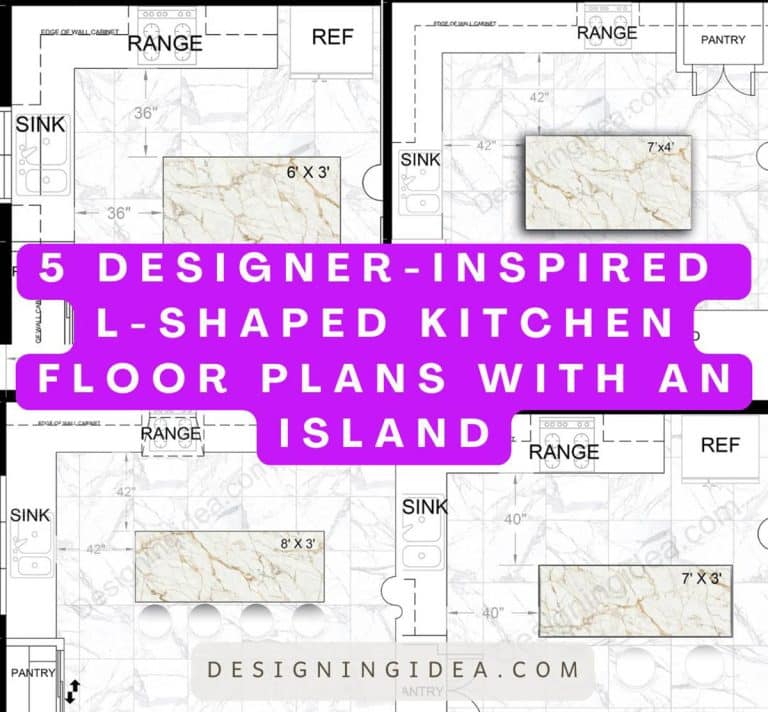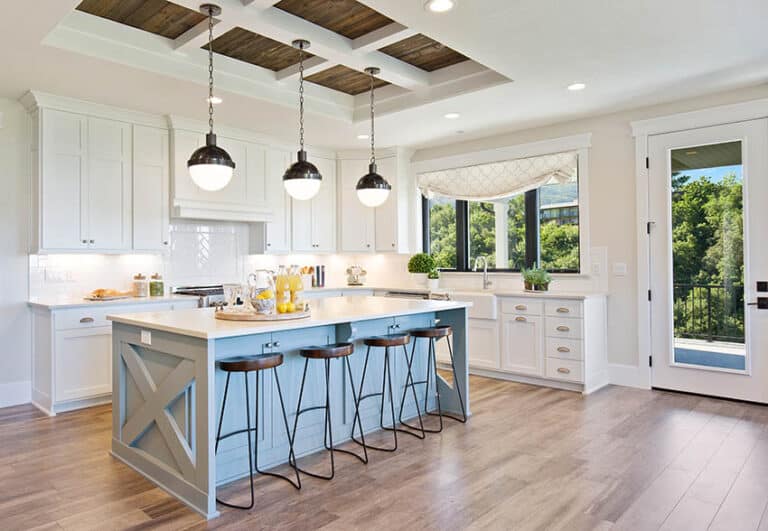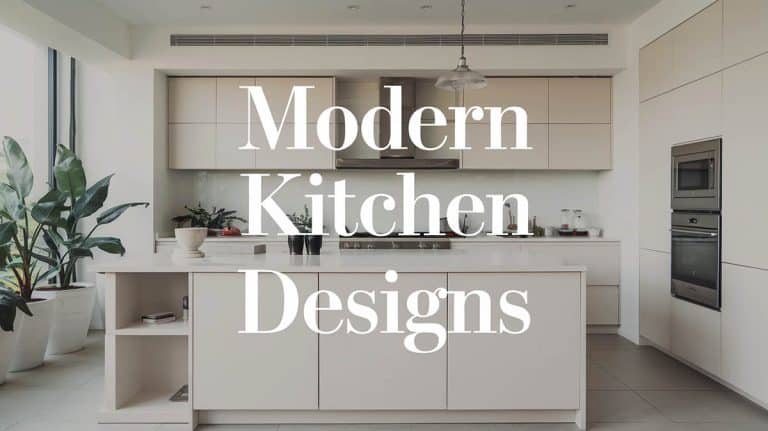Countertops That Look Like Concrete (Designer Top Picks)
It is dubbed “liquid stone” in the construction industry, and concrete has become one of the hallmarks of the contemporary style. But as countertops, concrete is typically more favored for its look than its structural integrity. For this reason, many designers and homeowners find countertops that look like concrete to be more durable, especially for areas that receive a lot of moisture and wear and tear.

In this article, we’ll tackle the reasons why countertops that look like concrete are a worthwhile investment compared to real concrete countertops. In addition, we’ve gathered a list of the most common countertops that simulate the look of concrete.
Why Use Countertops That Look Like Concrete?
• No need to wait for the curing process: You won’t need to wait for long periods to achieve the ultimate strength and toughness of your countertops if you opt for poured concrete. You may need to wait for 24 to 48 hours, depending on the type of concrete you’ve used.
• From less porous to nonporous surface: Concrete is inertly porous, and you may need to spend time and money to completely seal off the pores, making engineered and natural stone generally more practical to choose from.
• You can have the choice of a denser material: When you love the look of concrete but want a more durable worktop, denser and harder materials that look like concrete are a better choice for your countertop investment.
• Can chip and stain: Unlike many other materials, cement surfaces can be scratched and even chip if you’re not careful. In addition, they require a professional installation to ensure they are poured correctly.
Concrete Countertop Alternatives
As an architect and designer, I’ve seen many different kitchen remodels. Here are my favorite picks for concrete lookalikes that offer beauty and durability.
Quartz Countertops
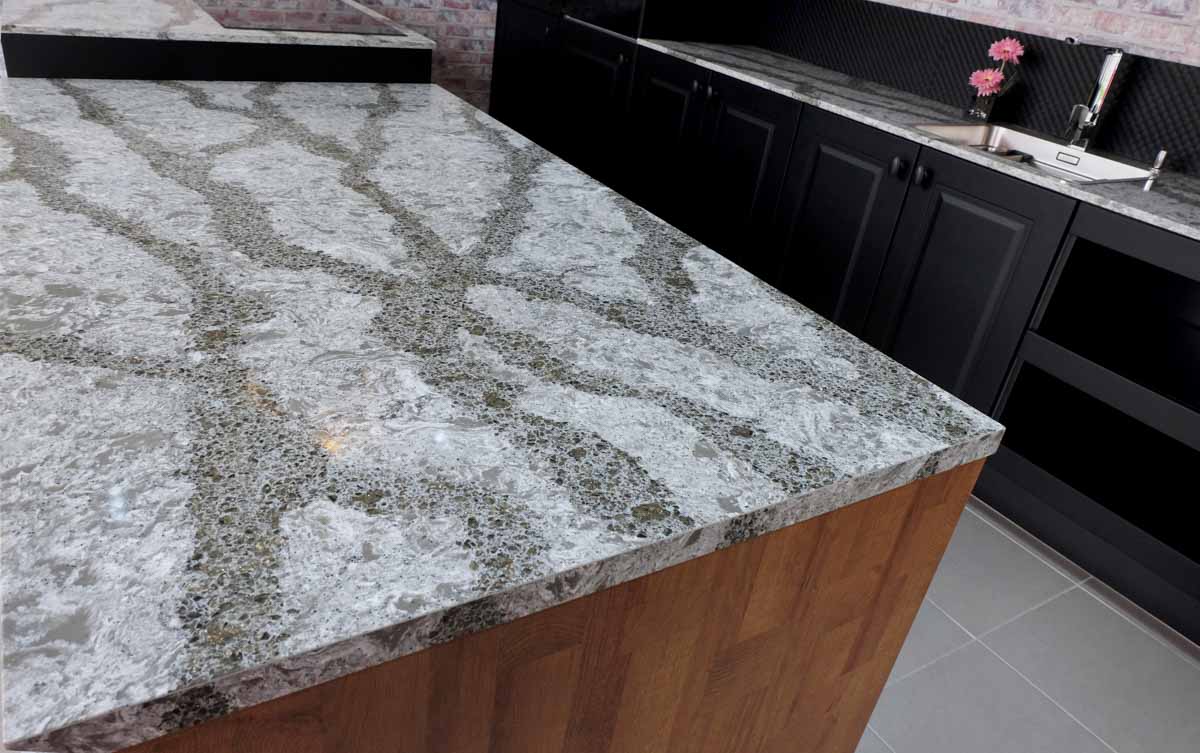
Another man-made material that is tougher than your concrete is quartz. Since it is an engineered material, it’s not hard to find a quartz slab surface that looks like poured concrete, such as gray quartz countertops. The low maintenance and excellent choices for color, pattern, finish, and edge type make quartz a standout choice.
Nonporous surfaces are excellent materials in busy areas such as kitchens and bathrooms, where quartz is more hygienic than concrete and other types of surfaces. Choose a honed gray quartz slab, which will have a soft gloss and leathery surface. Because of the tactile surface, fingerprints are less likely to show on your worktop.
• Cambria Bridgewater Quartz: A mixture of neutrals and a hint of blue, the medium gray pattern is an excellent substitute for your concrete countertops. From matte to gloss, any finish can showcase the mid-gray quartz.
• Babylon Gray Concrete Finish Quartz: If you want to amp up your concrete look, you’ll love medium-gray quartz with crystalized flecks for the perfect dimensional kitchen worktop, island, or vanity countertop.
• Midnight Majesty Concrete Finish Quartz: A darker version than Babylon Gray but with similar dimensional crystals, the Midnight Majesty Concrete Finish Quartz is the perfect contrasting material for light-toned cabinets.
• Manhattan Gray Quartz: The dark charcoal color of Manhattan gray quartz makes its smaller crystals almost unnoticeable but creates an interesting display of flecks under different lighting conditions. The striking concrete simulation gives a modern and minimalistic quality to interiors.
• Iced Gray Quartz: For that casual and modern aesthetic, the iced gray quartz is a perfect option as it showcases a uniform coloring and consistency of flecks or crystals that are hardly noticeable in any lighting condition.
Quartzite
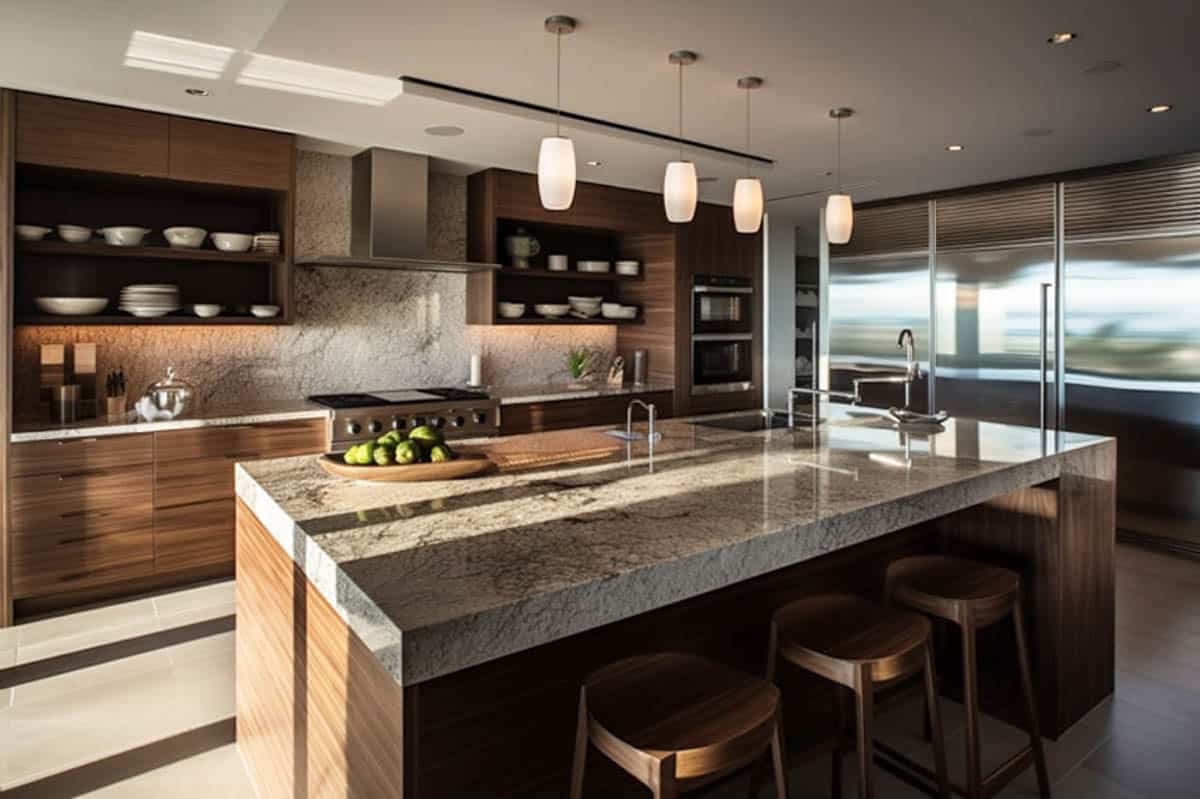
Quartzite is valued for its exceptional strength, which is slightly harder and denser than quartz. Quartzite countertops can have an average density of 2.68 g/cubic cm while quartz is 2.65 g/cubic cm, and unlike quartz, quartzite is a natural stone, making it a highly favorable material for kitchen countertops. This material is a durable and scratch-resistant countertop with the look of concrete.
• Gray Quartzite NS546H: When the required color for your concrete-looking countertop is light gray, you’ll find Gray Quartzite NS546H the perfect option. It has an almost consistent coloring and pattern with a slight showcase of diagonal veining crossing through the slab, making it look like a cross between marble and concrete.
Quartzites are firm, compact rocks composed of grains of quartz sand cemented by a later deposit of quartz. – Diamond-bit Performance in Quartzite, Albert J. Rambosek, Albert E. Long
• Mercury Gray Quartzite: For a veining that’s quite prominent for your countertop, the mercury gray quartzite is a perfect option. The medium-toned gray with varying light gray shades accompanies its diagonal veining.
• Misty Blue Quartzite: Like hewn from a rocky mountainside, the misty blue quartzite is a gorgeous blue-gray quartzite with prominent large veining that crosses through the slab. It’s a striking material that looks like pouring liquid concrete and can be used for countertops that have a sculptural design or as a focal point.
Gray Soapstone

Distinct with its willowy white veining, natural gray tones, and milky look, the exquisite gray soapstone can resemble concrete countertops but with an organic flair. Its gray colors range from light to medium gray.
Soapstone as countertops may not be as popular as quartz, but soapstone is known for its soft or soap-like texture but dense. Gray soapstone countertops score around 3 g/ cubic meter, which is higher than quartz and quartzite’s 2.5 to 2.8 g/cubic meter density scores. This makes an excellent alternative to your concrete countertop.
Corian

While Corian is more popularly known for its white color, the traditional countertop material can be customized in any color since it is made mainly of resin material. From super light to the moodiest dark gray, Corian can be made to have varying gray tones or a solid color, but the latter is the more popular option.
There are gray Corian countertops that have small specks as well as swirls of gray colors as well. The nonporous surface means you can install it in any room where it is exposed to moisture.
Moreover, unlike concrete countertops that can crack and create radiating hairlines from damaged areas, dented Corian surfaces can be fixed by heating and massaging the area to take its original form. An alternative to Corian is the Hanex Solid Surface.
Concrete Overlay: When you have a substrate that still has good structural quality, a concrete overlay is a practical substitute for a countertop to the slab material. You save money and effort while you get the look of concrete instantly.
You need excellent waterproofing for the surface, and make sure that the surface is level. The typical process done to achieve a concrete overlay is to apply thin coats of the concrete over the surface.
Laminates that simulate the look of concrete: One of the cheapest options is to cover an existing substrate with laminate material that mimics the look of concrete. It’s a fast process where you can transform your countertop into a countertop that looks like a concrete slab. Though, of course, you won’t get the tactile feel of concrete.
See more related content in our article about the different types of kitchen countertops on this page.

